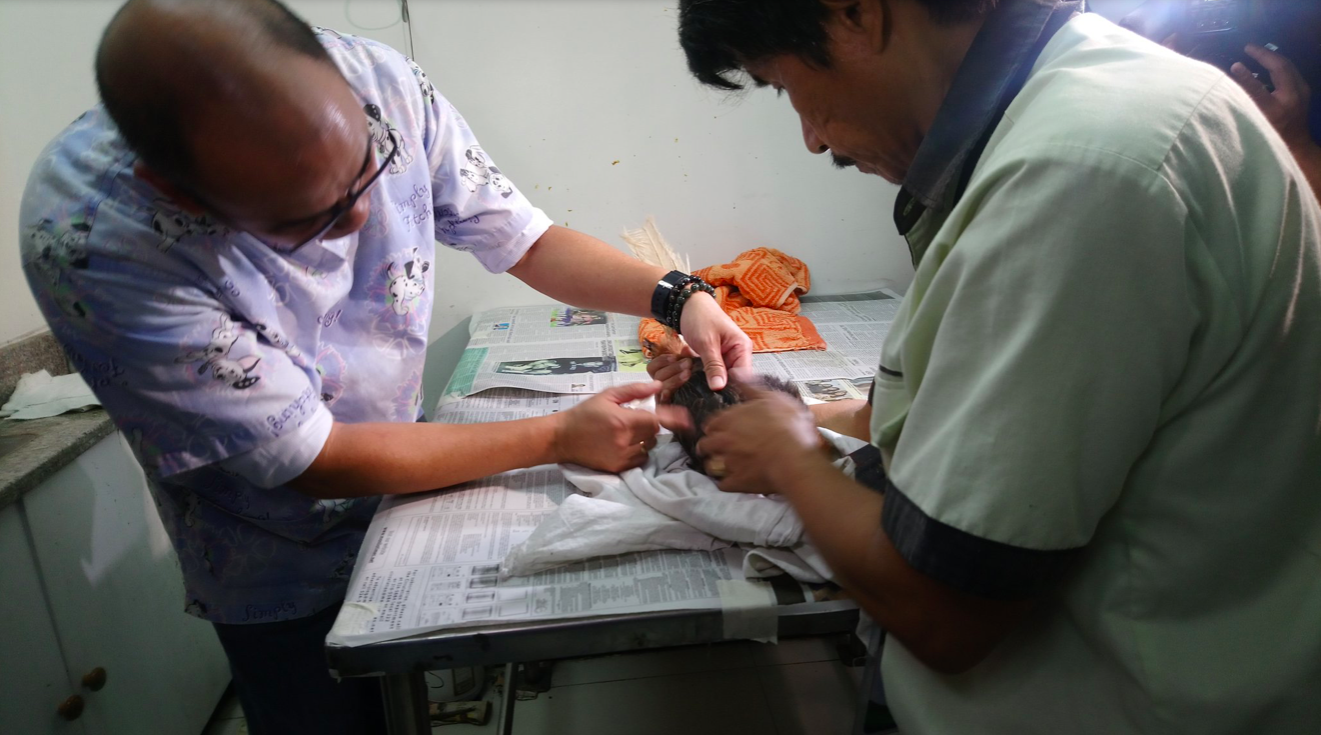
Officers of the Biodiversity Management Bureau’s Wildlife Rescue Center led by Dr. Esteven Toledo checkup a rufous hornbill that was rescued from the Taal Volcano island. (Photo courtesy of DENR)
MANILA, Philippines — The Department of Environment and Natural Resources (DENR) is calling on the public to turn over any rescued wildlife species that may have fled from the Taal Volcano Protected Landscape following the volcano’s eruption last week.
The animals, which may include endemic and endangered species, could have migrated to nearby communities after Taal began spewing ash and steam, the DENR said on Saturday.
Assistant Environment Secretary Ricardo Calderon, head of the DENR”™s Biodiversity Management Bureau (DENR-BMB), said anyone who might have encountered or rescued animals could turn them over to the DENR field offices in Batangas and Cavite provinces.
Ready to receive animals
“The DENR field offices in Batangas””Calaca and Lipa””are ready to receive these animals once they are rescued,” Calderon said in a statement.
He said the agency had teams from the field offices who were helping rescue animals in the peripheries of the volcano.
The DENR also reminded the public not to keep the wild animals as pets, or slaughter them for food in case of food shortage, as these acts are against the law.
Taal Volcano was declared a protected landscape in 1996 to protect and conserve its “ecological, biological, scientific, educational and recreational features.”
In an earlier interview, Calderon said there were more than 50 endemic bird species living in the volcano area.
“We are on the lookout [for them]. Some may have survived, flown out, and looked for another habitat,” he said.
Last week, a rufous hornbill (Buceros hydrocorax), which was believed to have fled from the Taal area, was turned over to the DENR-BMB. The bird, locally known as “kalaw,” was reportedly rescued in Cavite.
While it was found “generally healthy,”it remains at the Wildlife Rescue Center in Quezon City for rehabilitation.
“Once the bird recovers, it can be released in [Taal] once everything is settled, or in the Calabarzon area where their species are widespread,” Calderon said.
Rescue operation
Several groups and individuals, including animal rights advocates, mobilized last week after news spread that many animals, including pets, were left behind on Volcano Island and within the danger zone, following the sudden forced evacuation of thousands living near Taal.
But rescuing the animals”” mostly of horses, cattle and carabaos””is taking time because of Taal’s unpredictable state and the difficulty of getting large barges to access the lake surrounding the island. INQ

